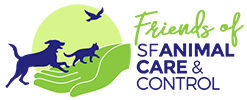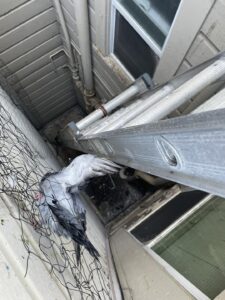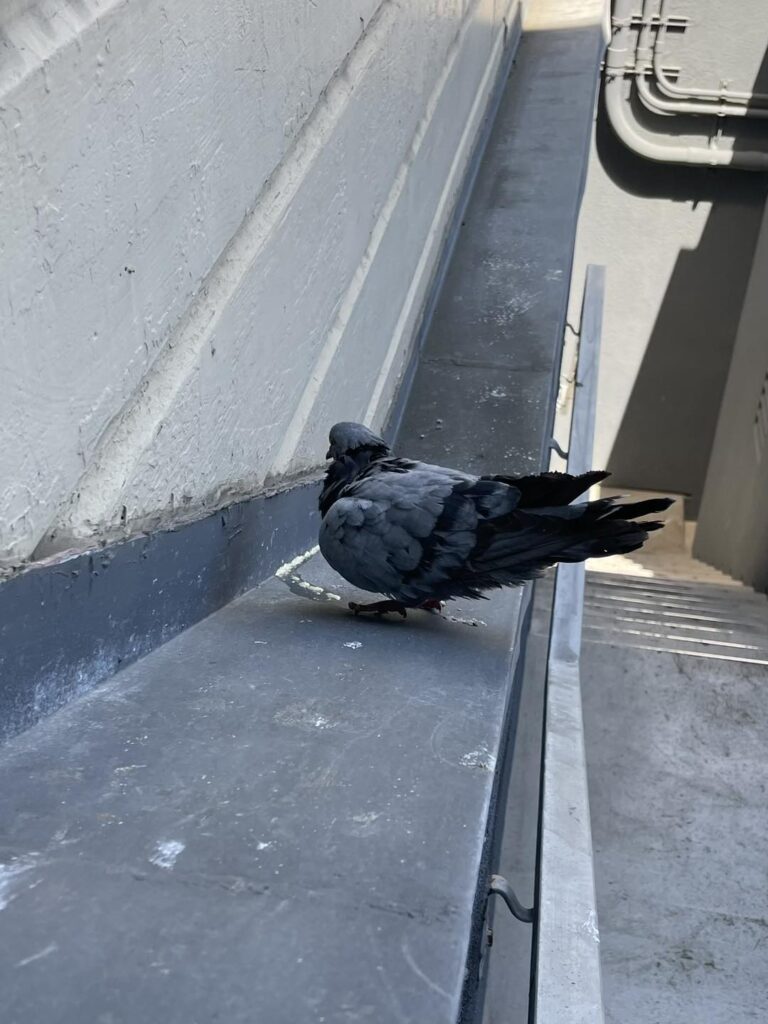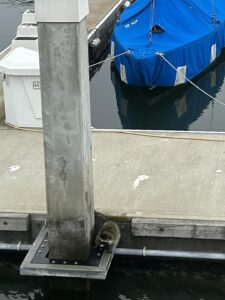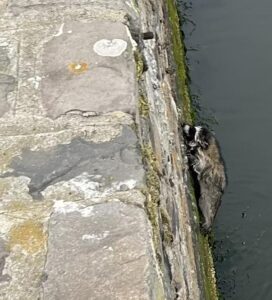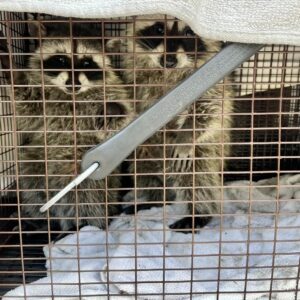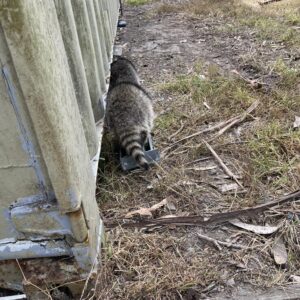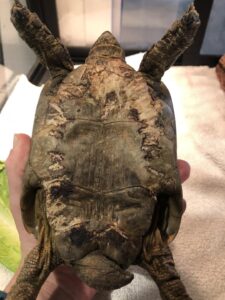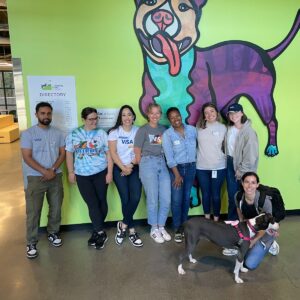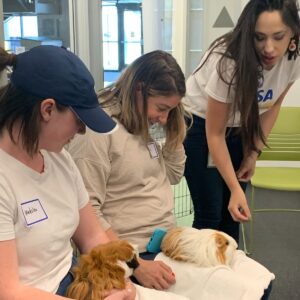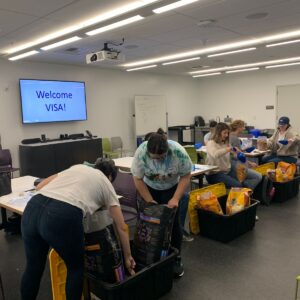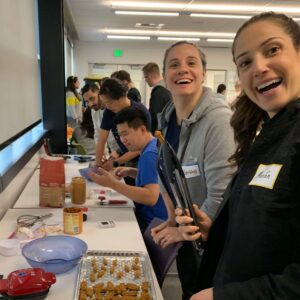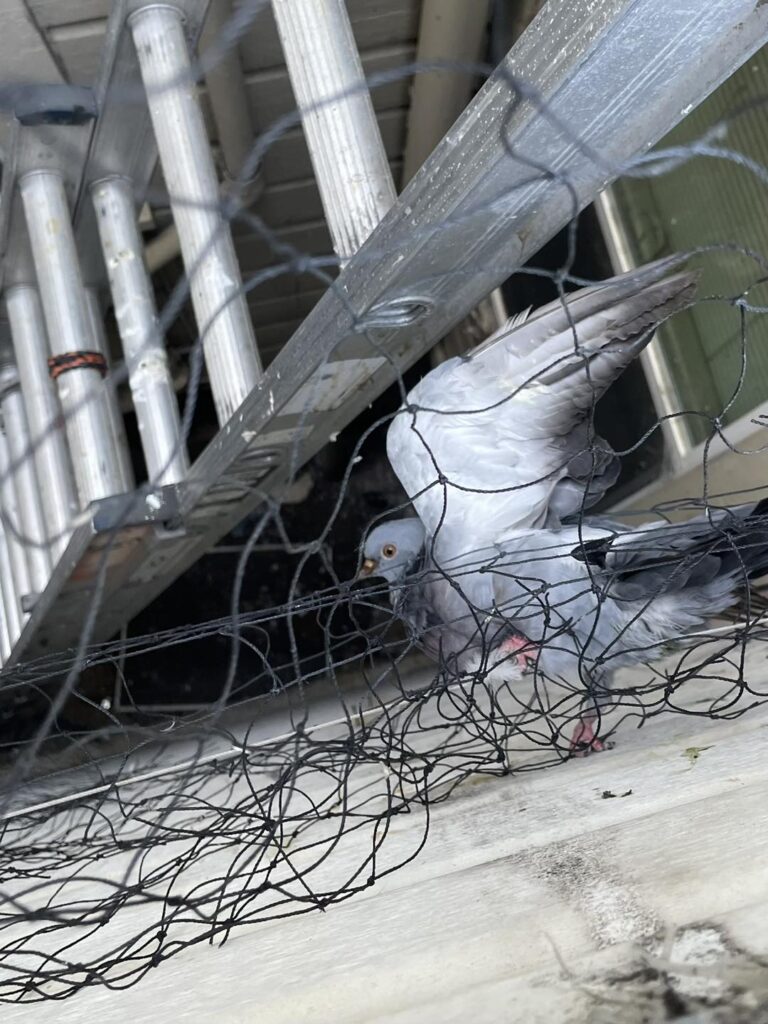 I was working at dispatch when a concerned resident called me about a pigeon that he saw when looking out his window. This poor pigeon was caught in netting and hanging upside down in a light well. Many apartment buildings have all sorts of spaces either between buildings or between different units and some try to keep the urban wildlife out by putting up netting. This often results in animals getting trapped in or beneath the netting, which can result in injury or even death to the animal
I was working at dispatch when a concerned resident called me about a pigeon that he saw when looking out his window. This poor pigeon was caught in netting and hanging upside down in a light well. Many apartment buildings have all sorts of spaces either between buildings or between different units and some try to keep the urban wildlife out by putting up netting. This often results in animals getting trapped in or beneath the netting, which can result in injury or even death to the animal
Thankfully the resident had just noticed the bird outside his window and he could see that the pigeon was still moving with no noticeable injuries. The resident sent me a picture and I quickly dispatched Officer Sherwood to go out and rescue the pigeon. She was able to reach the pigeon from a window above the bird and carefully cut the netting away from the feathers and feet. The pigeon appeared to be unharmed. Officer Sherwood found a nearby spot to set the pigeon down, and after getting his bearings, he waddled off down the ledge until he found an open spot and took flight.
Pigeons are extremely intelligent birds. They have an internal map and compass sense that help them determine direction and have been known to find their way back to their nest from over 1,300 miles away. Homing pigeons can fly over 500 miles at speeds of 60mph or more in a single day without making any stops for food or water. The fastest recorded speed of a pigeon was 92.5mph! Pigeons have no aggressive tendencies which makes them very easy to domesticate. They have served in wars, received medals of bravery, and are responsible for saving thousands of human lives on the front line. Many religions, such as Christianity, Islam, Hindu, and Sikh, honor these birds and give them sanctity and safety in their places of worship.
People often call our dispatch and ask if we help pigeons, and they will say “but it’s just a pigeon.” It’s never just a pigeon to us; these are remarkable birds that deserve to live and thrive in this city. So, if you see a pigeon in distress, please do not hesitate to call our dispatch at 415-554-9400 to report it. We work with rescues that help us with the injured pigeons and help them get back on their feet.
